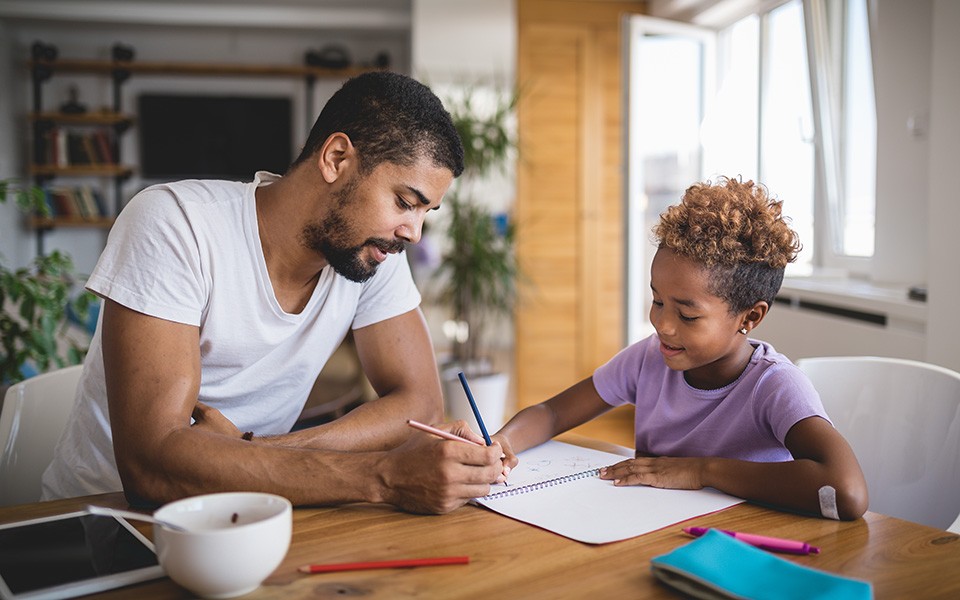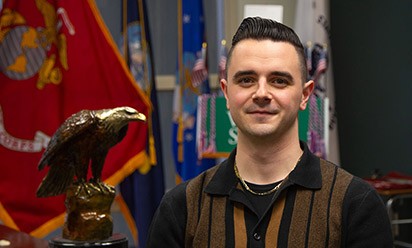‘We’re all figuring this out together right now’
Eastern Michigan University professor and educational technology expert Michael McVey offers his perspective on the new reality: The kids are at home all the time

YPSILANTI – “About half of the children in the world are basically out of school right now,” Michael McVey says. “We’re all figuring this out together.”
Such is the perspective of McVey, a professor of teacher education at Eastern Michigan University, on the sudden reality that the kids are not at school and now at home and potentially learning seven days a week.
Despite the startling change, McVey has a deep understanding of the evolving nature of the new educational framework, as well as the flexibility, patience and even humor required.
At Eastern, he works with training teacher candidates on the use of technology in the classroom. In addition, he serves on the Board of Directors for the International Society for Technology in Education and is a School Board member for Saline Area Schools.
McVey notes that when he prepares teacher candidates for teaching remotely, the crisis scenario is a snow day.
“That scenario suggesting a few days out of school has radically changed now,” McVey says. “It’s important to note that this is brand new for many teachers. You can’t just flick on a switch and move your class online. It takes skill and some additional training to become good at it. You’re going to see a lot of haphazard efforts or what seems somewhat sloppy. My advice is to is cut teachers (and yourself) some slack.”
With that understanding, here are some of McVey’s insights on our new residential reality:
A schedule: It can help to set up some sort of schedule, and it doesn’t have to mirror a school day. For example, take one hour of a day out for working or doing chores, an hour or two a day of academic work, and building in some creative time and getting out for a daily walk.
New discoveries: Just because you’re not in school, learning does not need to come to a dead stop. This is a chance to engage with things youngsters have rarely experienced, such as learning to bake, or reading widely. Examples include websites for books, such as Vooks, an app called Libby that links you to downloadable books from your local library and the School Library Journal whose blog has an enormous number of resources. Said simply: Read, read and read some more.
That said, relax a bit about keeping up. Students don’t have to be in front of worksheets all day. Have a bit of fun with the kids. McVey has seen neighborhoods encouraging kids to put up signs in the window or decorating entire rooms with art. You can keep art supplies throughout the house.
Indeed, there are all sorts of fun challenges kids can do. Students can try out journaling or other forms of writing, and if you have a digital camera, let them go at it. There are a lot of ways to be creative and to keep the informal learning going. Museums around the world are opening up virtual tours.
“There are now so many new tools for this kind of learning,” McVey says. “The biggest trick can be getting youngsters away from the TV for a while.’
Communication is crucial: Teachers are trying their best to reach out, and if parents are not communicating with their school district or vice versa, that should be happening, with a goal of trying not to overwhelm parents. And remember that students can really miss their teachers, and they miss their friends. Another idea for children is to set up their own blog to share their thoughts or details with the world.
The challenge of assessment: Teachers in various districts are now thinking through how to go about this. For instance, how do you know students watched that assigned video? To solve that challenge in various ways, they are setting up Google forms or using tools such as Edpuzzle.com. It will be interesting to see how this plays out several months from now, McVey says.
Certain subjects offer distinct challenges: Social studies teachers and math instructors “can rock it with so many online resources and apps,” in McVey’s words. But other classes, such as studio art or physical education – anything hands on – can be trickier. Yet McVey sees this as a great opportunity for innovation, adding “Teachers are going to become so good at this.”
Varied Internet access: McVey readily acknowledges how challenges can vary greatly from family to family, with issues such as access to Wi-Fi or bandwidth, a term he calls “information equity” differing widely, even across Washtenaw County.
He notes that his school district has passed out sheets where there is good WiFi available in parking lots around certain schools, and he’s heard of students filling out applications for universities from the parking lot at a McDonald’s.
McVey tells the story of one parent, who describes how his children have taken over the basement, building a complicated fort and then acting out stories and imaginary games.
“After a week or so, parents are going to start comparing engaging activities with each other,” McVey says. “It’s really interesting to read parents’ Twitter accounts. So far, a lot of people are embracing this with a degree of humor.
“Here’s the thing: We’re all in this together. We will figure it out together.”
About Eastern Michigan University
Founded in 1849, Eastern is the second oldest public university in Michigan. It currently serves nearly 18,000 students pursuing undergraduate, graduate, specialist, doctoral and certificate degrees in the arts, sciences and professions. In all, more than 300 majors, minors and concentrations are delivered through the University's Colleges of Arts and Sciences; Business; Education; Engineering and Technology; Health and Human Services; and, its graduate school. EMU is regularly recognized by national publications for its excellence, diversity, and commitment to applied education. For more information about Eastern Michigan University, visit the University's website.
More Stories

Eastern Michigan University awards Summer Research and Creative Activity Grants.

Eastern Michigan University to launch new Bachelor of Business Administration in Financial Planning and Wealth Management degree.

Eastern Michigan University empowers student-faculty collaboration with Undergraduate Symposium Research Fellow Awards.

Eastern Michigan University senior Raya Lasiewski inspires hope and healing through personal journey with eating disorder.

Veteran exceeds limits to becoming an Eastern Michigan University graduate.

